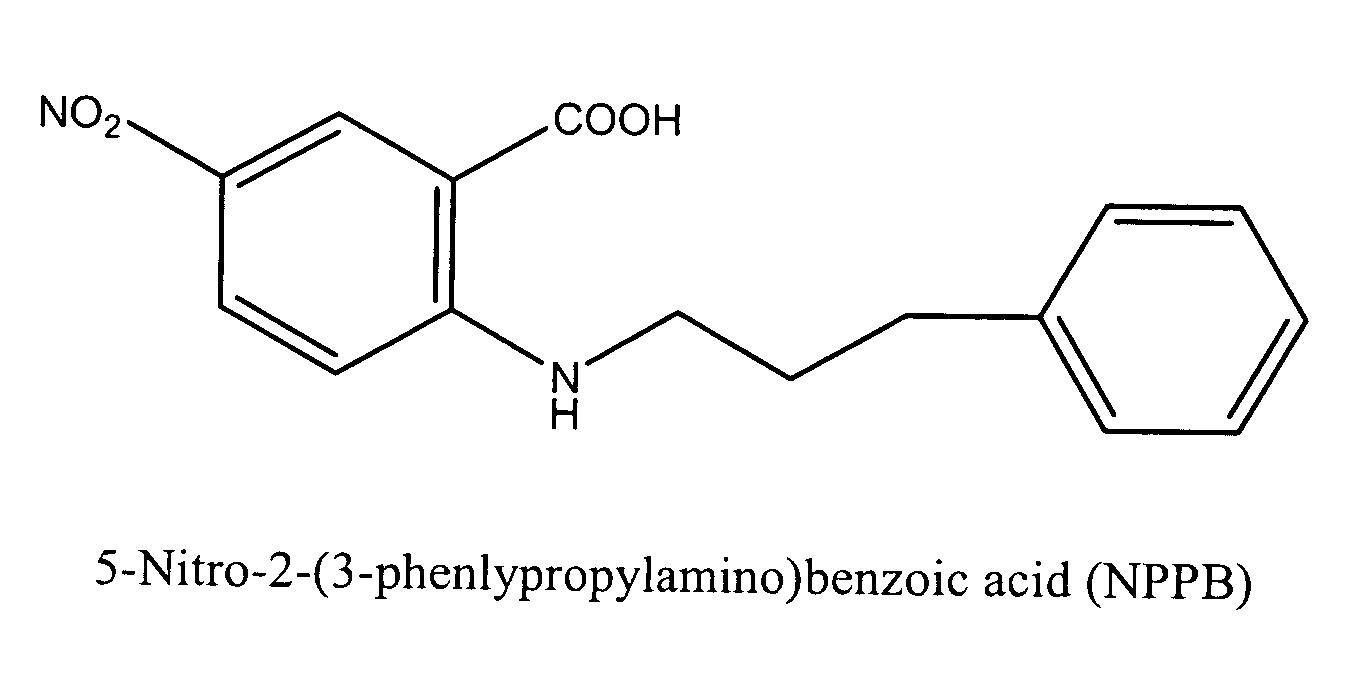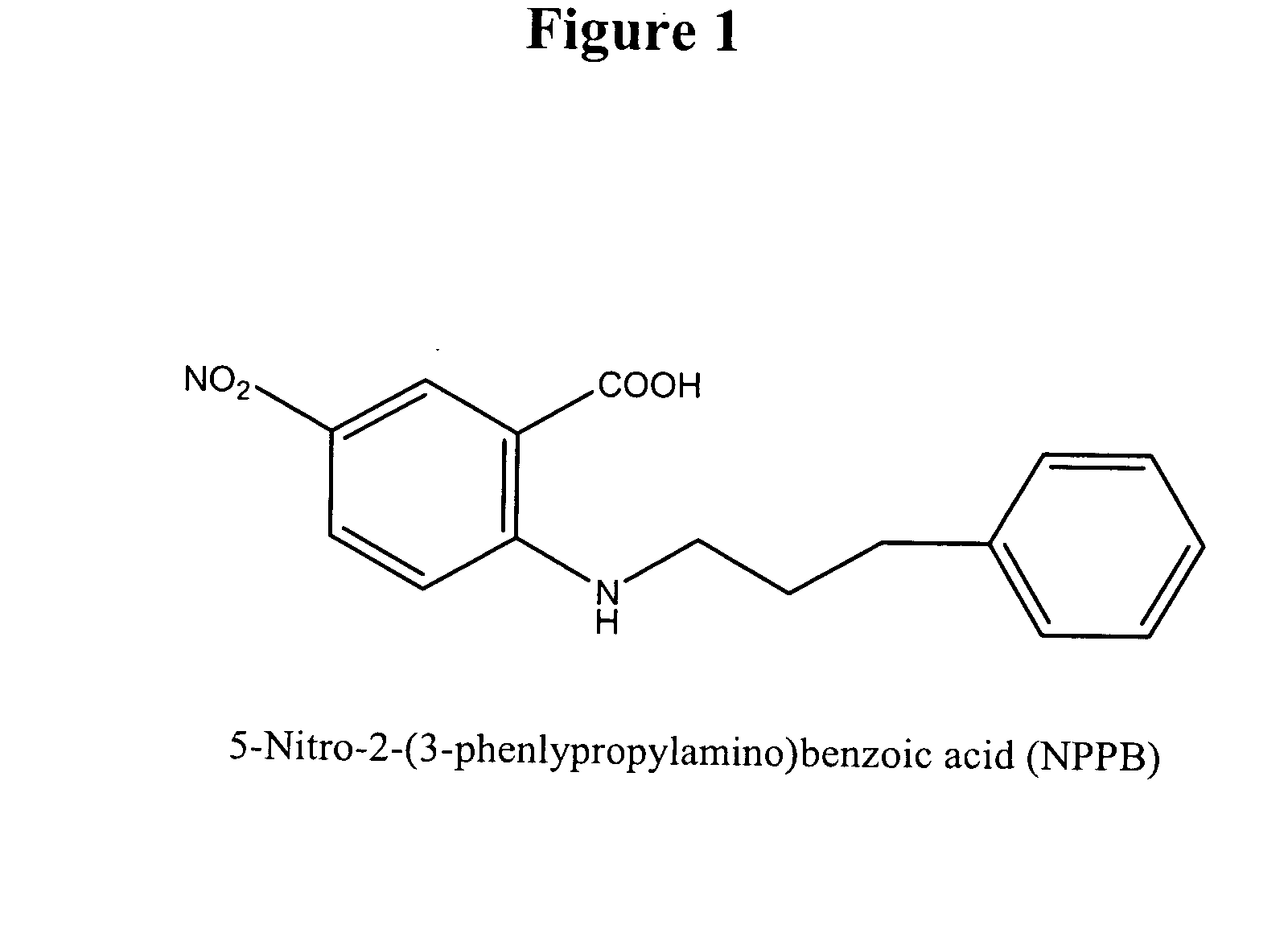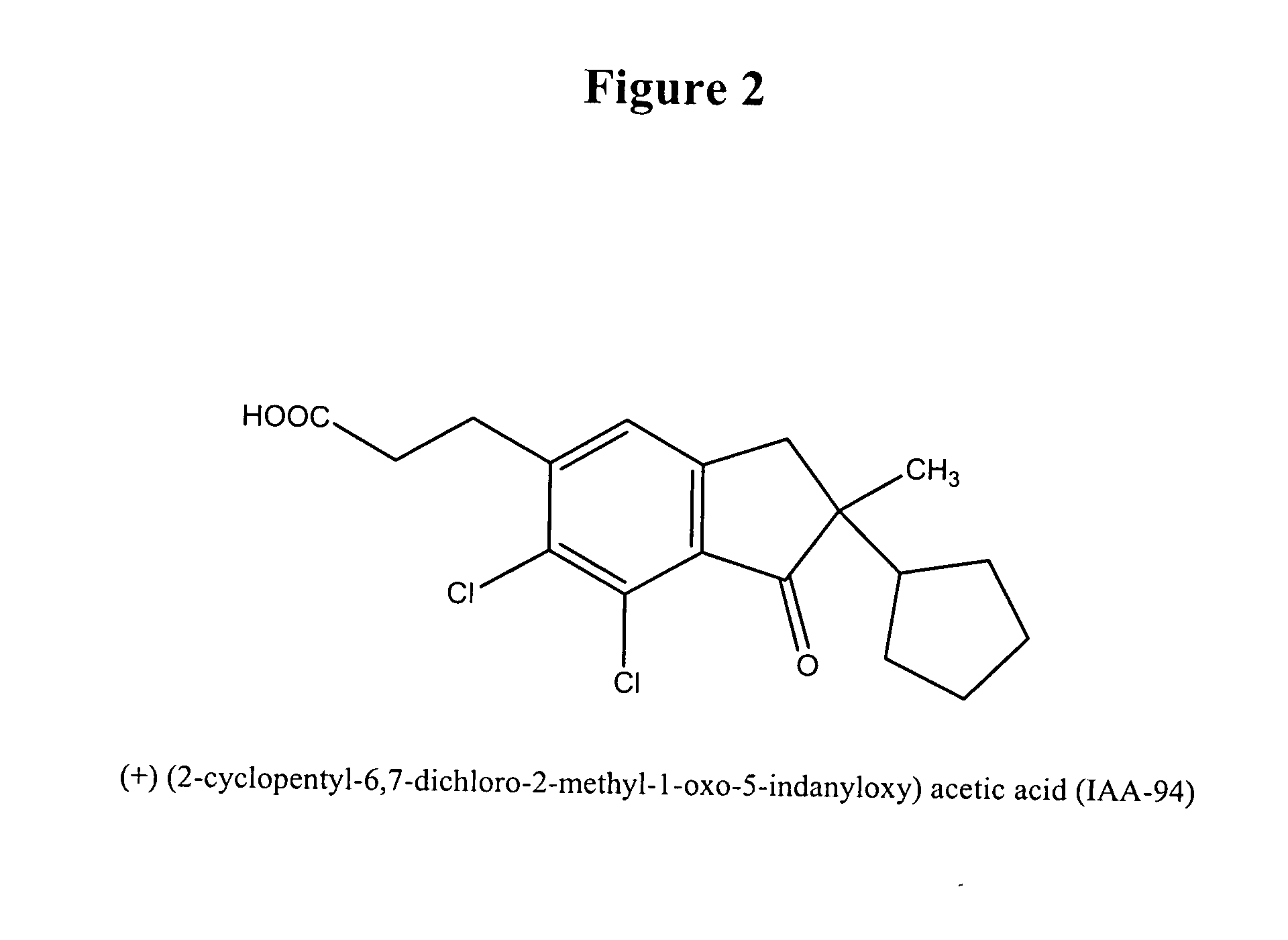Pesticidal compositions and methods of use
a technology of compositions and pesticides, applied in the field of pesticide compositions and methods of use, can solve the problems of small parasitic portion, considered pests, and significant portion of crops, and achieve the effect of reducing the number of pesticides
- Summary
- Abstract
- Description
- Claims
- Application Information
AI Technical Summary
Benefits of technology
Problems solved by technology
Method used
Image
Examples
example 1
Toxicity of DIDS, NPPB, 9-AC, and IAA-94 Against M. incognita and C. elegans
[0089]A stilbene natural product, DST, (FIG. 1) was previously isolated from the symbiotic bacterium Photorhabdus luminescens that lives inside nematodes of the genus Heterorhabditis used as an effective biological control agent in turf. DST has nematicidal activity against a variety of nematode species (24 hr lethality 100% at 100 ppm), including Caenorhabditis elegans and Meloidogyne incognita (Hu et al., 1999). The symbiotic nematodes within which the bacterium lives (Heterorhabditis spp., in this case H. megidis), was completely insensitive to DST at concentrations up to 200 micrograms per milliliter (ug / ml) (Hu et al., 1999). Because DST bears strong structural resemblance to DIDS (FIG. 1), a well-established blocker of anion transporters, it was hypothesized that the two compounds would share a similar mode of action on cell membranes, and that this could be the basis of insecticidal or nematicidal ac...
example 2
AT Blockers Effect on M. incognita Egg Hatching
[0094]Meloidogyne incognita (plant parasitic nematode) eggs were collected from tomato plant roots and were suspended in water. The solution was either diluted or concentrated to adjust the egg load to about 5000 / ml. AT stock solutions prepared in DMSO and 300 ul of test solution was placed in a well, along with 20 ul of aqueous solution containing eggs. The number of eggs in 20 ul solution ranged from 115 to 143 (n=10). Each treatment (2, 5, 10, 20, or 40 ppm) was replicated 5 times. Microplates were sealed with Parafilm™ and incubated at room temperature. Similar tests conducted with 0.2% DMSO alone served as controls. Egg hatching was monitored at 24, 72, 120, and 168 hr after incubation. Both moving and non-moving nematodes were counted to arrive at the number of eggs hatched. Proportion of egg hatch was calculated as the number of juveniles divided by total number of eggs.
[0095]The AT blockers reduced egg hatch of the plant parasit...
example 3
Toxicity of AT Blockers Against the Insect Drosophila melanogaster
[0096]Toxicity tests were conducted using mixed sex adults of D. melanogaster maintained on artificial diet in the department of entomology, Virginia Tech. Test concentrations of 6.25, 12.5, 25, 50 or 100 ppm were prepared in 0.2% dimethyl sulfoxide (DMSO) for DIDS, 9-AC, NPPB, and IAA-94. The above final concentrations were obtained after mixing them in 10 ml of 10% sugar solution. Similar preparations with 0.2% DMSO alone served as controls. One end of a cotton wick was dipped in 0.5 ml of sugar solution and placed on the glass vial containing 10 adult flies of mixed sex. Each concentration of test chemical had 5 replications. Mortality counts of flies were taken 24, 48, and 72 hrs after treatment. Insects without movement upon probing were considered dead. LC50 values and confidence intervals for each chemical were estimated using POLO PLUS software program. The data provided in Tables 3-A and 3-B below confirm th...
PUM
| Property | Measurement | Unit |
|---|---|---|
| time | aaaaa | aaaaa |
| concentrations | aaaaa | aaaaa |
| RH | aaaaa | aaaaa |
Abstract
Description
Claims
Application Information
 Login to view more
Login to view more - R&D Engineer
- R&D Manager
- IP Professional
- Industry Leading Data Capabilities
- Powerful AI technology
- Patent DNA Extraction
Browse by: Latest US Patents, China's latest patents, Technical Efficacy Thesaurus, Application Domain, Technology Topic.
© 2024 PatSnap. All rights reserved.Legal|Privacy policy|Modern Slavery Act Transparency Statement|Sitemap



